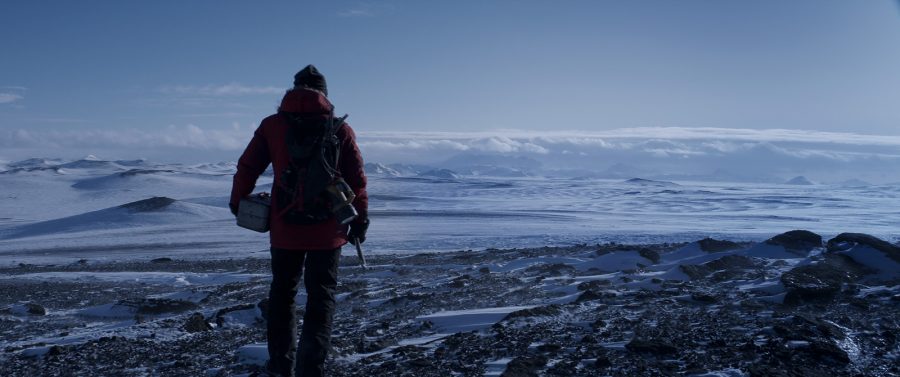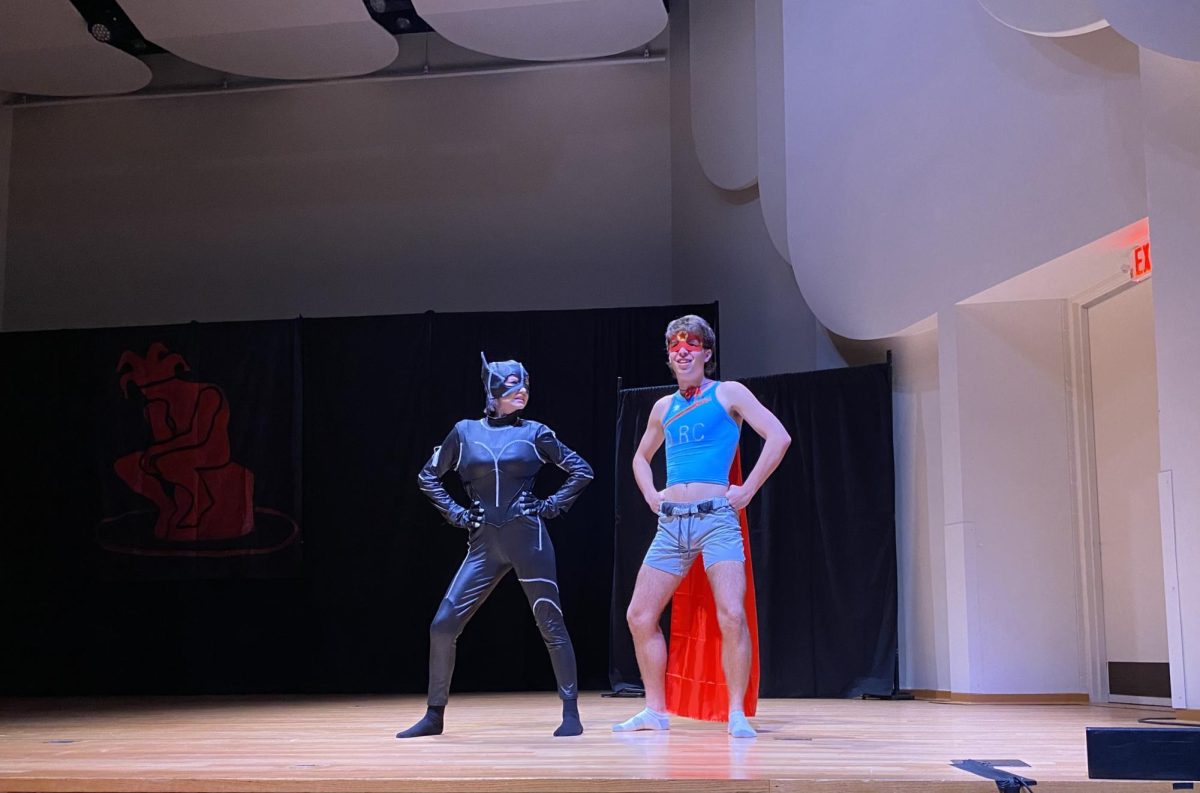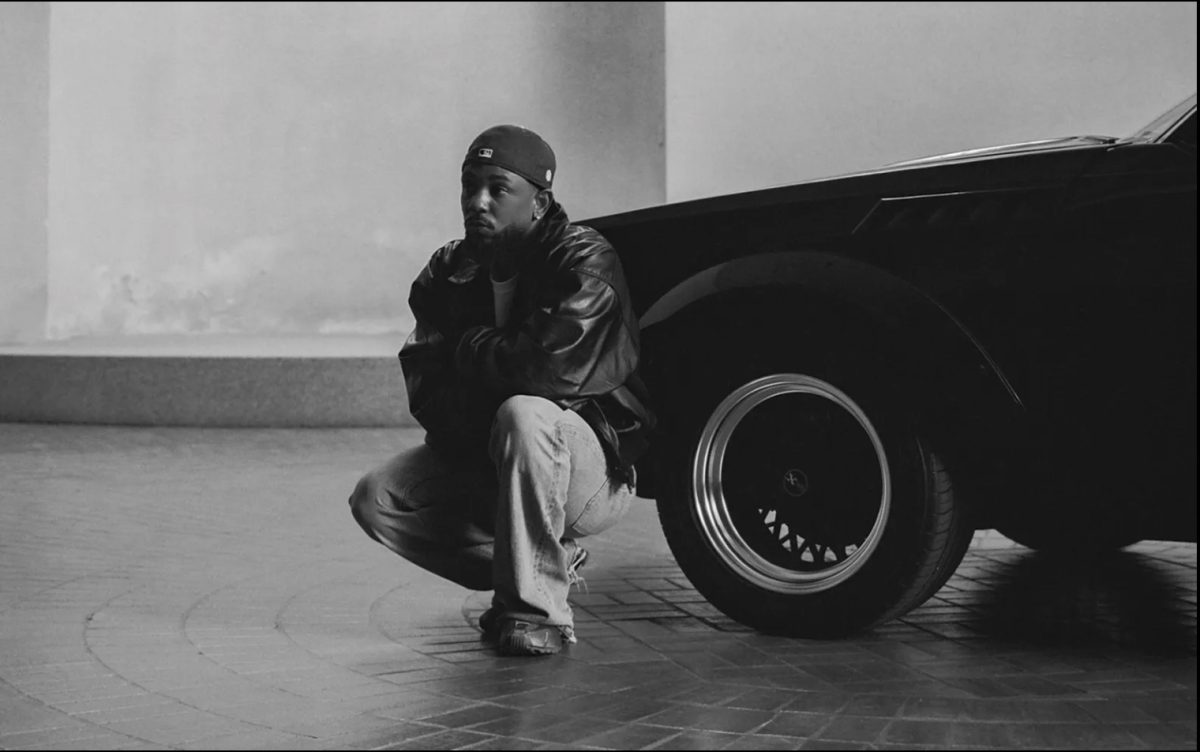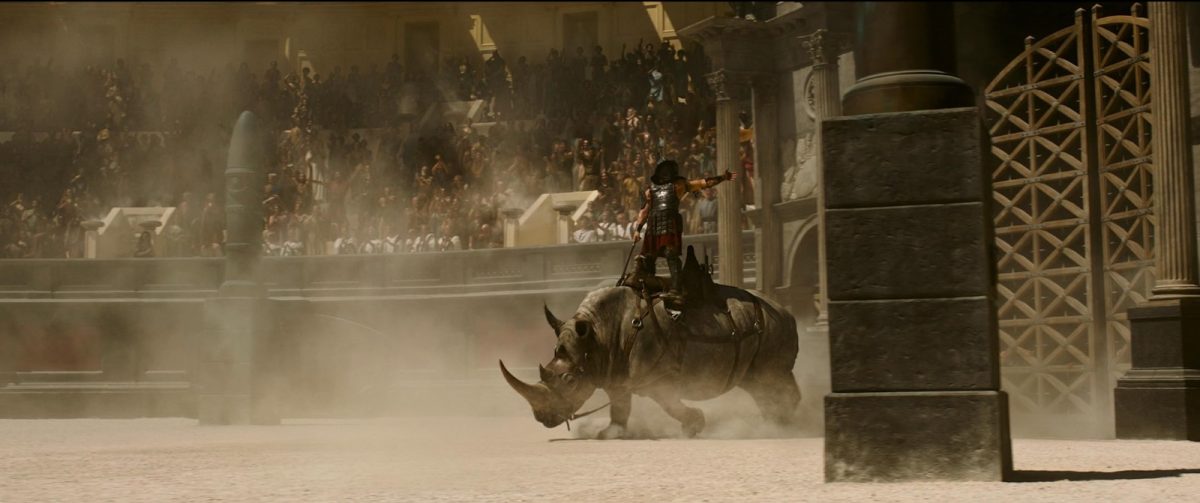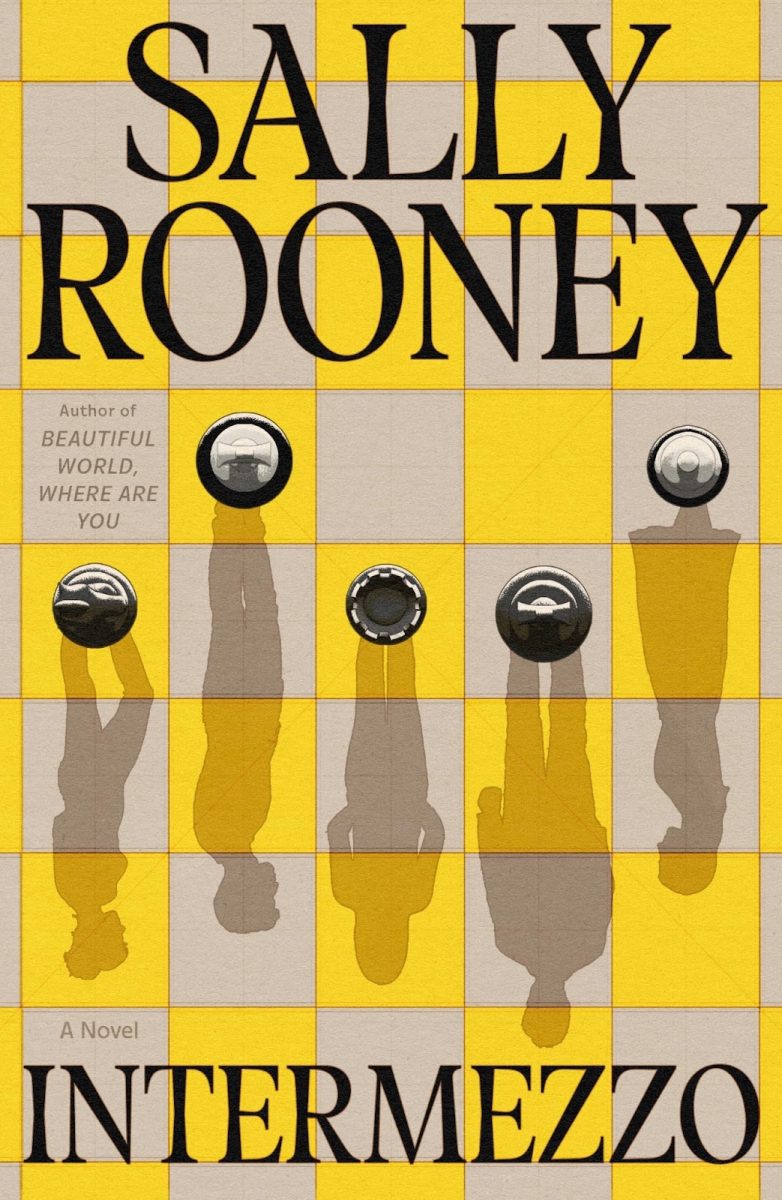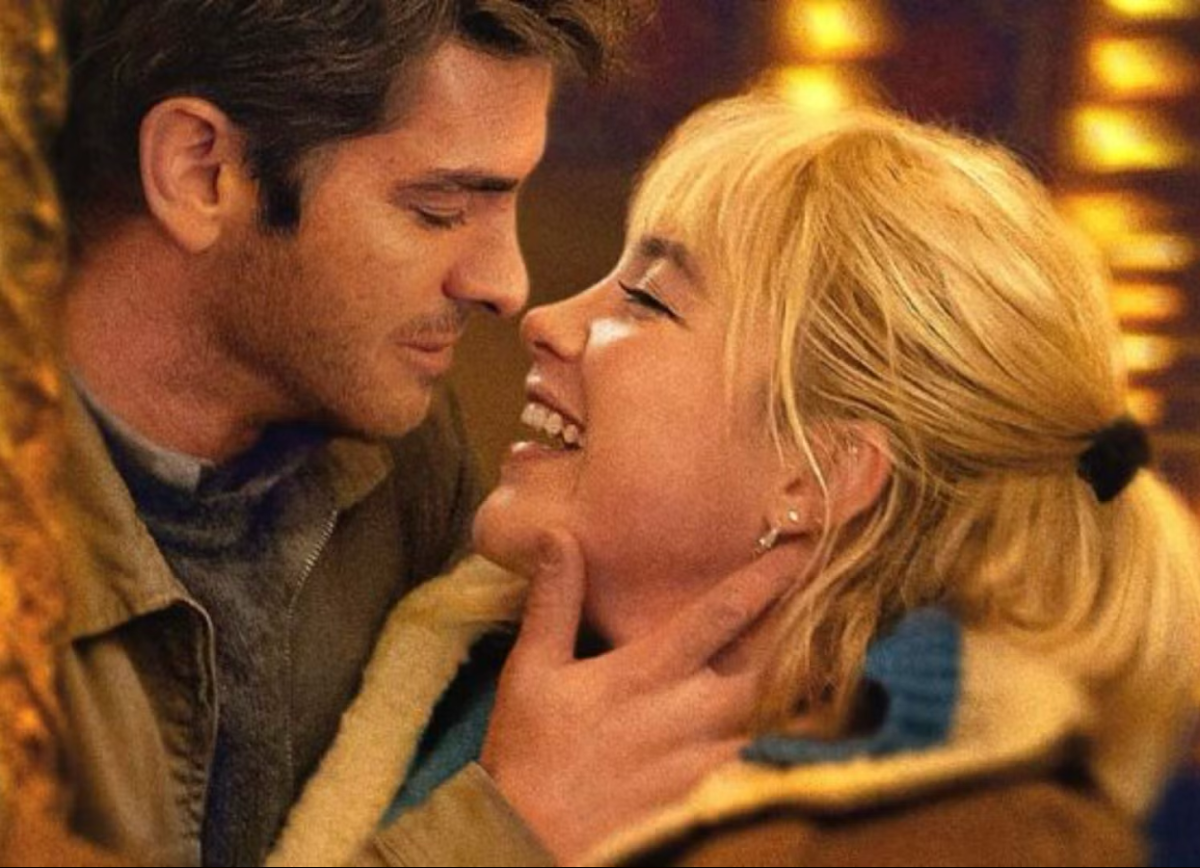There are wintry days and windy nights, and then there’s Arctic, the new film directed by Joe Penna, starring Mads Mikkelson as a downed airman eeking out an existence in the Arctic Circle. Mikkelson’s Overgård is a speck along a horizon of endless white, fighting nature’s fickle cycles and the likely reality that the cavalry isn’t coming. Arctic opens with Overgård tightly foregrounded, monotonously shoveling snow. Eventually, the camera cuts to an overhead shot, contextualizing his myopia into the gigantic S.O.S. Overgård has carved into the snow. He lives, and may soon die, in the midst of a frigid oblivion.
With fishing lines plunged into the ice and the crashed plane as a bunker, Overgård silently survives on sashimi and timetables. His days are structured through his beeping watch, which refreshes his sanity and imposes a feeble order on the sublime disaster. Siphoning whatever extant vitality he has into a daily trek up to the top of a snow bank, Overgård’s attempts at radio rescue manifest as a slow slippage into death. Like a drunkard teetering on the edge of a pool, Overgård’s existence doesn’t have long until it takes its plunge.
But about twenty minutes into Arctic, in a one-shot-at-rescue miracle, Overgård flags down a chopper, briefly. As deliverance approaches Overgård on his perch, it is slowly staggered by the wind and eventually whipped violently into the snow. So much for that.
Overgård investigates the wreckage and finds, among the dead, a young woman (Maria Thelma Smáradóttir) gashed and barely alive. Dragging her back to his makeshift domicile, he tries to nurse her back to health, but her gruesome side-slit begins to rot and his paltry supplies can only do so much. After discovering a family photo of the woman, urged by her impending death and thin tether to civilization, Overgård manufactures a semblance of duty, in a time as good as any, and makes for an exit. He sets off to try to reach a seasonal rescue station, located on the helicopter’s map, and the rest of Arctic consists of a trudge through the tundra as Overgård fends off all manners of natural disaster, teetering on the edge of optimism and relentlessly resuscitating himself through the woman’s faint society.
Arctic presents a no-nonsense vision of nature, spare yet terrifyingly vast in its visual scope. We frequently get shots of a Lilliputian Overgård set against the harsh, limitless mountains of snow and ice as the film imagines a sort of frigid apocalypse, becoming all the more horrific because the dead zone Overgård navigates actually exists. The arctic surges seem, at times, so vicious and elemental, so utterly gravitational, that one fears Mikkelson will either ossify in snowman form or else be blown off the side of the earth. These episodes are shot all the way to their highest, howling pitch and then cut ahead to the next period of relative calm, with Overgård and the young woman buried or bunkered and beginning to stir.
As Overgård grunts and grits his way towards the vague rescue station, nature’s vicissitudes slowly erode his body and spirit. The distance grows instead of shrinks as the elements slash and recede like a deadly, puckish snake, and the young woman’s health mostly ebbs.
The way Arctic shews nature’s blithe brutality is via an aesthetic palette similar to Paul Schrader’s First Reformed. The film laughs at our anthropomorphizing, showing a nature that is unsentimental and remote and sublime only in its monumental horror. The visual austerity of Arctic is the sort that shows and never tells (there are approximately twenty lines of dialogue in the film, none of which really matter): the camera hardly ever shakes, and the shots jump between close-ups of an increasingly-haggard Mikkelson and establishing shots that reinforce Mikkelson’s relative impotency, alienation and puniness compared to the vastness surrounding him. The premise, as well as a certain, gruesome scene, echoes the grimy realism of 127 Hours. Arctic drains every cinematic contrivance and presents only the atmospherics provided by nature herself. The result is a tense and relentless slog, though the hour-and-thirty-eight minute film never goes slack or feels tedious, and Mikkelson gives a desperate, stoic and determined performance, capitulating in an inevitable sort of way to his circumstance, yet fighting for its resolution.
“Naturalism is nature seen through the temperament,” Emile Zola said, and Overgård’s temperament, defined by a mangy tenacity and rousing compassion, invites quiet sympathy. He exists as the fiercely subjective warrior facing the unsentimental wilderness — a well-worn tale, yet here injected with a novel performance that denies over-acted treacle and clichéd revelations. In fact, there is never any revelation aside from the recognition of absurdity. The environment vibrates with Overgård’s small, desperate effort as if incensed to increase its violence toward him. But Mikkelson crunches texture into the flatness, and his journey becomes a humble act of self-definition.
Arctic is essentially a joyless film, yet never a boring one. There is more squirming discomfort than absolute optimism or plot-point climax, and the Penna-Mikkelson duo seems fully committed to endless tribulation. By the end, their bleak realism forms a sort of pact with the viewer. You do not want rescue to come, in fact you feel insulted by it, as if it’s a hoary cop-out. The music, too, by Joseph Trapanese, remains an insistent, orchestral massage into arctic darkness, forming less of an epic sense than a quiet ode to persistence. “To live is to suffer,” Nietzsche says, and in Arctic we eventually accept that precept as unassailably true. By the end, Penna and Mikkelson have even convinced us we wouldn’t have it any other way.


